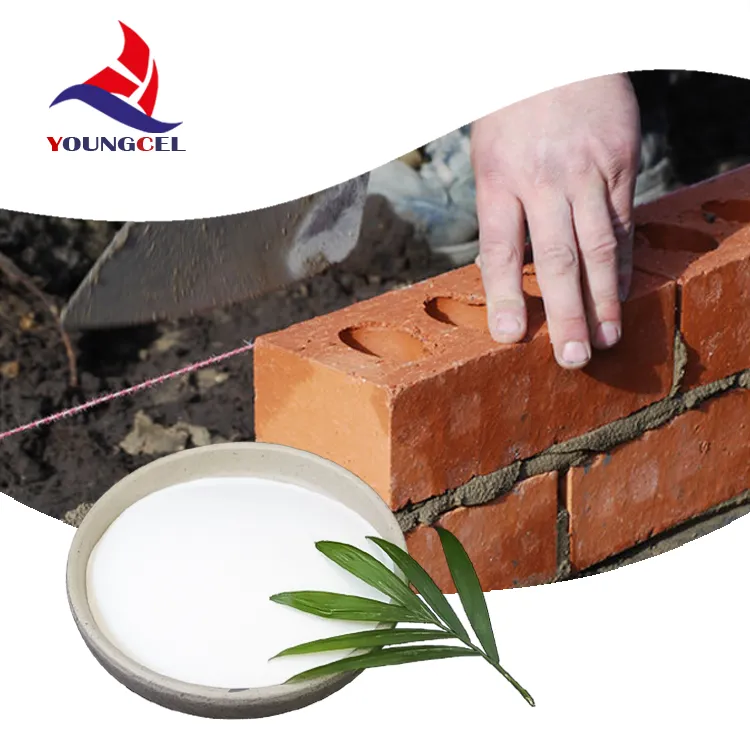The Importance of RDP (Redispersible Polymer Powder) in Modern Construction
Redispersible Polymer Powder (RDP) is a white, free-flowing powder that, when mixed with water, forms a stable and elastic film. These polymers have become essential in the construction industry, particularly in the formulation of various building materials such as tiles, plasters, and adhesives. The significance of RDPs lies not only in the performance enhancements they provide but also in their role in promoting sustainable construction practices.
Understanding RDPs
RDPs are typically made from emulsions of polymers such as vinyl acetate-ethylene (VAE), styrene-acrylic, and acrylate copolymers. During the manufacturing process, water is evaporated from the emulsion, leaving behind a dry powder. This powder can then be easily transported, stored, and handled, making it a convenient solution for construction applications. When mixed with water, RDPs redisperses, meaning they rehydrate and regain their original properties, allowing them to contribute effectively to the performance of the mixed materials.
Performance Advantages
One of the primary benefits of using RDPs in construction is the improvement in adhesion properties. For instance, when incorporated into tile adhesives, RDPs enhance the bond strength between tiles and substrates, reducing the likelihood of cracks due to thermal expansion or contraction. Similarly, in mortars and renders, RDPs contribute to better adhesion, which ensures durability and longevity of the structures.
Moreover, RDPs improve the flexibility and workability of cement-based products. This is particularly crucial in varying climatic conditions where thermal movement can exert stress on building materials. The elastic properties given by RDPs enable materials to absorb and redistribute these stresses, thus preventing damage.
Water Resistance and Durability
rdp powder redispersible polymer

In addition to adhesion and flexibility, RDPs impart water resistance to construction materials. This characteristic is vital in applications where moisture is a concern, such as in exterior wall systems or wet areas like bathrooms and kitchens. The polymer film formed by RDPs acts as a barrier, reducing water absorption and protecting the underlying materials from damage.
Furthermore, the addition of RDPs can enhance the resistance of building materials to various environmental factors, including UV radiation and chemicals. This increased durability translates to longer-lasting structures and lower maintenance costs over time.
Sustainability Considerations
As the construction industry continues to evolve, there is an increasing emphasis on sustainability and eco-friendly practices. The use of RDPs aligns with these trends by enabling the formulation of lower VOC (volatile organic compound) products. Many RDPs are derived from renewable resources and can reduce the overall carbon footprint of construction materials.
Additionally, by improving the longevity and durability of construction materials, RDPs contribute to the sustainability of buildings. Longer-lasting materials reduce the need for repairs and replacements, which can be resource-intensive and generate significant waste.
Conclusion
In conclusion, Redispersible Polymer Powders play a crucial role in enhancing the performance of various construction materials. Their ability to improve adhesion, flexibility, water resistance, and overall durability makes them invaluable in today’s building practices. As the industry moves toward more sustainable solutions, RDPs will continue to be an essential component, not only optimizing material performance but also supporting eco-friendly construction initiatives. With ongoing advancements in polymer technology, the applications and benefits of RDPs are expected to expand, solidifying their status as a cornerstone of modern construction practices.
-
Rdp Powder: Key Considerations for Wholesalers in the Building Materials IndustryNewsJul.08,2025
-
Key Considerations for Wholesalers: Navigating the World of Hpmc - Based ProductsNewsJul.08,2025
-
Hpmc Detergent: Key Considerations for WholesalersNewsJul.08,2025
-
Key Considerations for Wholesalers: China Hpmc For Tile Adhesive, Coating Additives, Concrete Additives, and MoreNewsJul.08,2025
-
Crucial Considerations for Wholesalers: Navigating the World of Construction MaterialsNewsJul.08,2025
-
Key Considerations for Wholesalers Sourcing Additive For Cement, Additive For Concrete, Additive For Putty from Additive Manufacturer Shijiazhuang Gaocheng District Yongfeng Cellulose Co., Ltd.NewsJul.08,2025




